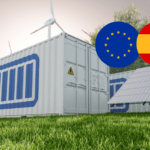The European Commission has proposed on 2 July an amendment to the EU Climate Legislation, setting an EU climate target for 2040 of a 90% reduction in net greenhouse gas (GHG) emissions compared to 1990 levels, as called for in the Commission’s policy guidelines for 2024-2029. It will provide certainty for investors, innovation, strengthen the industrial leadership of our companies and increase Europe’s energy security. Just this week, the latest Eurobarometer showed strong public support for EU climate action, providing a strong mandate to keep the EU’s clean transition agenda on track. The EU is on track to reach our target of 55% by 2030. Today’s proposal builds on the EU’ s existing legally binding target to reduce net GHG emissions by at least 55% by 2030, and sets out a more pragmatic and flexible way to reach the target, with a view to a decarbonised European economy by 2050.
In line with the EU Competitiveness Compass, the Clean Industrial Pact and the Affordable Energy Action Plan, the proposed 2040 climate target takes full account of the current economic, geopolitical and security landscape and offers investors and businesses the predictability and stability they need in the EU’s clean energy transition. By staying the course on decarbonisation, the EU will boost investment in innovation, create more jobs and growth, increase our resilience to the effects of climate change and become more energy independent.
Commission President Ursula von der Leyen said: “As Europe’s citizens increasingly feel the impact of climate change, they expect Europe to act. Industry and investors are looking to us to set a predictable direction of travel. Today we demonstrate that we stand firmly behind our commitment to decarbonise Europe’s economy by 2050. The goal is clear, the journey is pragmatic and realistic.
Last July 2’s proposal is based on an in-depth impact assessment and advice from the Intergovernmental Panel on Climate Change and the European Scientific Advisory Board on Climate Change. The adoption follows substantial engagement with Member States, the European Parliament, stakeholders, civil society and citizens, launched with the Commission’s recommendation on the target in February 2024.
On the basis of these consultations, the proposal sets out a way to reach the 2040 target in a different way than has been done in the past. A central element is the flexibilities that the Commission will take into account when designing future legislative instruments to achieve this 2040 climate target. These include a limited role for high-quality international credits from 2036, the use of permanent domestic removals in the EU Emissions Trading Scheme (EU ETS) and greater flexibility between sectors to help achieve the targets in a cost-effective and socially just way. Concretely, this could give a Member State the possibility to compensate a struggling land use sector with an overachievement in reducing emissions in waste and transport.
The Commission’s proposal emphasises the importance of accelerating and strengthening the right enabling conditions to support this 90% target. These include a competitive European industry, a just transition that leaves no one behind and a level playing field with our international partners.
In addition, the proposal sets out a clear framework for our post-2030 climate and energy legislation. National specificities will be taken into account. Cost-effectiveness, simplicity and efficiency will be guiding principles, as well as ensuring technology neutrality and a just and fair transition for all.
Delivering on the Clean Industrial Pact for the 2040 climate target
The Commission has today published a Communication on the presentation of the first proposals for the Clean Industrial Pact, only a few months after its launch. As the EU’s Compass to ensure competitiveness and decarbonisation go hand in hand, its implementation is crucial for the 2040 climate target. Today’s Communication provides an overview of the first wave of actions taken, the progress made and the remaining measures to come.
One of the key deliverables is the State Aid Framework for a Clean Industrial Pact, adopted last week, to further support investment in the clean energy transition. The simplification of the Border Carbon Adjustment Mechanism (BCAFM) was also agreed, exempting 90% of importers, thus reducing bureaucracy and ensuring smooth implementation. This simplification is the first step before a more general review of the CBTF later this year, accompanied by legislative proposals to strengthen the mechanism. Today’s Communication summarises the results of the Commission’s analysis on how to provide a solution to carbon leakage from exports.
Complementing the state aid framework and today’s Communication, the Commission also published the Recommendation on fiscal incentives to encourage investments in clean technologies and industrial decarbonisation, through measures such as accelerated depreciation and tax credits. It also presented a Recommendation and guidance documents to optimise the use of the new EU renewable energy rules with the aim of scaling up renewables and reducing energy costs.
Affordable energy measures to expand the manufacturing of grid components and support power purchase agreements, the pilot project for the next Industrial Decarbonisation Bank, the forthcoming Chemical Industry Action Plan and sectoral dialogues with stakeholders are among the actions that will help deliver on the Clean Industrial Pact. Expected by the end of this month, proposals for the next multiannual financial framework will also set out how the future EU budget will support the clean transition.
Setting the EU’s 2040 climate target to meet international climate commitments
With the proposed 90% target, the EU is also sending a signal to the global community: it will stay the course on climate change, comply with the Paris Agreement and continue to work with partner countries to reduce global emissions.
Ahead of the UN Climate Change Conference (COP30) in Belém (Brazil) in November, the Commission will now work with the Council Presidency to finalise the communication on the EU’s Nationally Determined Contribution (NDC).
Next steps
The Commission’s proposal for a 2040 climate target will now be submitted to the European Parliament and the Council for discussion and adoption under the ordinary legislative procedure.
An agreed future EU climate target will also serve as a reference for the post-2030 EU policy framework to be developed subsequently.
Background
The European Climate Act, which entered into force in July 2021, enshrines in law the EU’s commitment to achieve climate neutrality by 2050 and the interim target of reducing net greenhouse gas emissions by at least 55% by 2030 compared to 1990 levels. To meet its agreed decarbonisation targets, the EU has since adopted a legislative package for 2030 known as “Target 55” and its implementation by EU Member States, essential to meet the 2040 targets, is ongoing. The Commission’s assessment of national energy and climate plans, presented on 28 May, showed that the EU is collectively moving closer to the 2030 climate target of a 55% reduction in greenhouse gas emissions.
The Climate Act legally requires a 2040 interim climate target to set the pace towards climate neutrality, a proposal that is required within six months of the first global stocktake of the Paris Agreement, reached in December 2023.
More information: European Commission







Leave a Reply